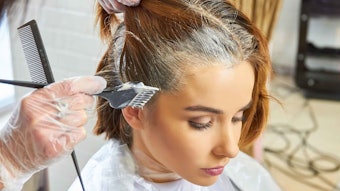This column is the first in a two-part series on importing cosmetics into Japan. It discusses the general requirements for cosmetic manufacturers and distributors. The second part discusses these requirements in more depth, and provides a closer look at sunscreen requirements.
In Japan, cosmetics are regulated by the Ministry of Health, Labour and Welfare (MHLW) under the Pharmaceutical Affairs Law. Cosmetics are regulated differently than quasi-drugs; the law defines cosmetics as “articles with mild action on the human body, which are intended to be applied to the human body through rubbing, sprinkling or other method, aiming to clean, beautify and increase the attractiveness, alter the appearance or to keep the skin or hair in good condition.”
Under this law, soaps are classified as cosmetics; other classifications are: “perfume and eau de cologne” including fragrance; “makeup cosmetics” such as foundation creams, lipsticks and eye makeup; “skin care cosmetics,” i.e., facial cream, skin lotion, skin milk and cleansing cream; “hair care products” including hair dye, shampoo and hair treatments; and “special-purpose cosmetics” such as sunscreen.
Importers of cosmetics into Japan assume all quality assurance and product liabilities and they must be ready to take full responsibility for imported cosmetics through regulation analysis and safety testing.
The Customs Tariff Act prohibits the import of fake name brand products and knock-off copies, and such items are subject to confiscation or destruction at customs. Importers can even be subject to criminal penalties, including fines and imprisonment. However, the Pharmaceutical Affairs Law imposes no restrictions on substances that are imported into Japan as raw materials for cosmetics and then subjected to domestic processing.
Importers must obtain a primary distributor’s license for cosmetics, which refers to the sale, rental or lending of manufactured or imported cosmetics. This license does not cover companies that manufacture cosmetics for another company. In addition to obtaining a primary distributor’s license, any primary distributor that engages in the final packaging, labeling in Japanese, or storage of the imported products is required to obtain a cosmetic manufacturer’s license. Even if the product is labeled in Japanese in another country, the importer of that product must obtain a cosmetics manufacturer’s license because that product must be temporarily stored in a licensed Japanese facility that has the ability to ship after the necessary tests. This excludes the case of manufacturing delegated to another licensed manufacturer, which would already have the license.
Under the law, anyone may resell without restrictions but the sale of defective cosmetics is prohibited. Advertising and labeling for cosmetics are also regulated by law, which details labeling guidelines for containers or packaging, and certain items that may not appear in the labeling. Products that violate labeling regulations are deemed improperly labeled, and their sale is prohibited.
The law also requires that the container, packaging or package inserts of cosmetics be specifically labeled to ensure appropriate use, handling and quality, and clarify liability. All information must be clearly and explicitly expressed in Japanese, and labeling with false or potentially misleading statements and unapproved claims of effects/efficacy are prohibited.
Information appearing on the label should include: the name and address of the primary distributor; the brand name and manufacturing number or code; the list of ingredients and expiration date; and other details as specified by the MHLW’s Ministerial Ordinance. The name and address of the primary distributor should be the office location where the marketing supervisor-general serves. In the case of those obtaining primary distribution approval for products manufactured in foreign countries, the name and country of foreign approval holder should be provided, along with the name and address of the nominated primary distributor.
The brand name listed should be that for which notification has been posted for primary distribution. Ingredients must be clearly expressed in Japanese and listed in descending order. Finally, expiration dates are provided for a cosmetic as designated by the MHLW.






!['I think the biggest game-changer about [MoCRA's] ... requirement for GMPs is how it changes what it means to be adulterated,' Brandi Reinbold, senior manager of global certification for NSF International, said in this sponsored videocast. Register now to watch and learn more. It's free.](https://img.cosmeticsandtoiletries.com/files/base/allured/all/image/2023/11/NSF_Intl_Thumbnail.6554efdc29816.png?auto=format%2Ccompress&fit=crop&h=191&q=70&rect=275%2C70%2C1328%2C748&w=340)



